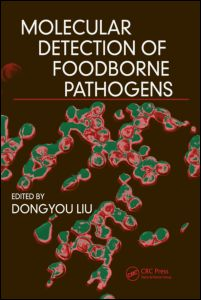Paragonimus
Narain, Kanwar, Agatsuma, Takeshi, and Blair, David (2010) Paragonimus. In: Liu, Dongyou, (ed.) Molecular Detection of Foodborne Pathogens. CRC Press, Boca Raton, USA, pp. 827-837.
|
PDF (Published Version)
Restricted to Repository staff only |
||
![[img]](https://researchonline.jcu.edu.au/10548/2.hassmallThumbnailVersion/10548_Narain_et_al_2010_Book_Cover.jpg)
|
Image (JPEG) (Book Cover)
Download (15kB) |
Abstract
Paragonimiasis or endemic hemoptysis is an important disease of man and other mammals caused by several trematode species belonging to the genus Paragonimus. Typically, paragonimiasis is a disease of the lungs and pleural cavity but extra-pulmonary paragonimiasis is also an important clinical manifestation. Lung-flukes utilize a mollusk as a first intermediate host and a freshwater crab or crayfish as a second intermediate host. Consumption of raw, undercooked or pickled freshwater crab or crayfish introduces lung-flukes into the human body. Similarly, raw or undercooked meat of paratenic hosts such as boar, bear, wild pig or rat, in the muscles of which juvenile worms can survive for years, is also an important source of human infection.
Paragonimiasis is a neglected disease that has received relatively little attention from public health authorities. It has been estimated that around 293 million people are at risk and several million are infected worldwide. However, this may be an underestimate as there are still many places where the disease burden has yet to be assessed. In recent times there has been increased recognition of the public health importance of paragonimiasis and other foodborne trematodiases. In the case of paragonimiasis, this resurgence of interest is partly due to the common diagnostic confusion of paragonimiasis with tuberculosis. Symptoms of the former closely mimic those of tuberculosis, frequently leading to inappropriate treatment being administered especially in areas where both tuberculosis and paragonimiasis co-occur and are overlapping public health issues? Failure of patients to respond to treatment for tuberculosis may lead to inflated estimates of the prevalence of multi-drug resistant tuberculosis and have other far-reaching health implications. Interest in Paragonimus species outside endemic areas is also increasing because of the risk of infection through consumption of crustaceans traded far from their point of origin in today's globalized food supply.
Traditionally, morphological criteria were used for identification and taxonomy of lung-flukes. However, the explosion of molecular techniques in recent years has led to the development of better diagnostic tools and a better understanding of lung-fluke taxonomy. Nevertheless, there is still confusion regarding the taxonomic status of a number of species. Molecular characterization of lung-flukes will improve our understanding of evolution and epidemiology of paragonimiasis and our capacity to control this foodborne disease.
| Item ID: | 10548 |
|---|---|
| Item Type: | Book Chapter (Research - B1) |
| ISBN: | 978-1-4200-7643-1 |
| Keywords: | paragonimus, molecular diagnosis, zoonosis, lung-fluke |
| Date Deposited: | 30 Apr 2010 00:44 |
| FoR Codes: | 07 AGRICULTURAL AND VETERINARY SCIENCES > 0707 Veterinary Sciences > 070708 Veterinary Parasitology @ 50% 11 MEDICAL AND HEALTH SCIENCES > 1108 Medical Microbiology > 110803 Medical Parasitology @ 50% |
| SEO Codes: | 92 HEALTH > 9201 Clinical Health (Organs, Diseases and Abnormal Conditions) > 920120 Zoonoses @ 100% |
| Downloads: |
Total: 135 Last 12 Months: 2 |
| More Statistics |



